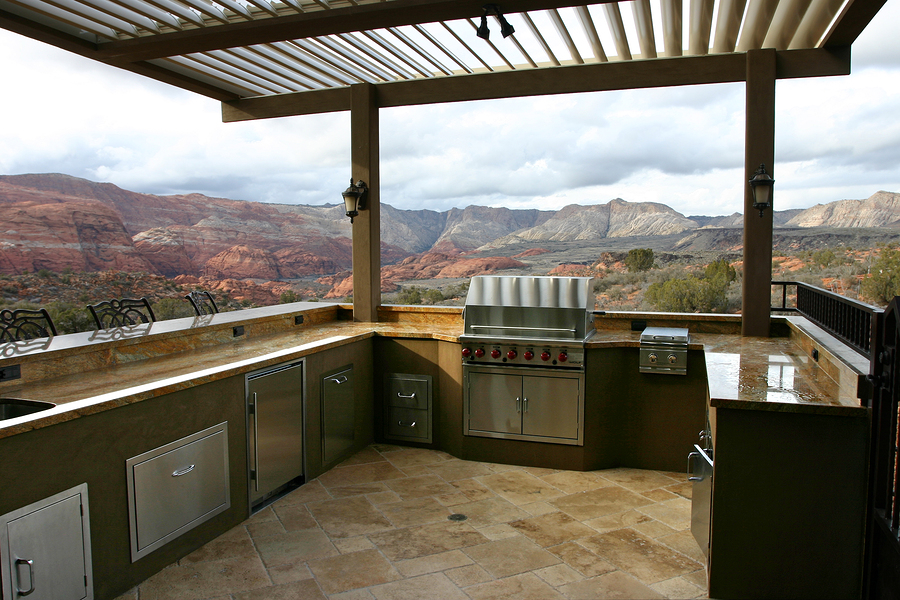Important Rules for Outdoor Kitchen Design

More and more Sioux Center, Iowa homeowners are electing to add outdoor kitchens to their backyard entertaining space as a way to increase usability and enhance the overall outdoor experience. Once you’ve got your landscape design on lockdown and you’ve installed paver patios and walkways to add function, along with needed lighting, there’s no reason not to shift your focus to an outdoor cooking solution composed of more than a stand-alone grill. Here are a few important rules for outdoor kitchen design every homeowner should know.
Practical Placement is Essential
There are a couple of reasons why most outdoor kitchens abut the exterior walls of the home. For one thing, you want to be close to utilities like water for sinks, power for appliances, and gas for your grill. In addition, you’re likely to need items from your indoor kitchen, such as dishes and utensils, cooking tools, food, and the dishwasher. Situating your outdoor kitchen near the closest entrance will significantly reduce the time and effort to transport items back and forth.
Create a Covered Kitchen Area
Why do you need a covered outdoor kitchen? In addition to providing you with the option to cook outdoors in any weather, a cover helps to protect your kitchen area from the elements. Do you want the sun to fade and oxidize your grill or appliances? Do you want to clean the rainwater and debris from storms off your granite countertops?
A cover helps to prevent premature deterioration like stains, cracks, chips, and other damage. Whether you add a covered pergola or pavilion to your outdoor kitchen, you’ll gain added protections that increase the longevity of your outdoor kitchen elements.
Match Your Home Style
An outdoor kitchen is more than just a functional addition to your backyard – it’s an entire room on the outside of your house. This means it needs to match the architectural style of your home so that it doesn’t look like you took a kitchen from another structure and dropped it in your yard. If you want a beautiful complement to your existing structure that increases your home value and appeal, matching styles is essential.
Know What You Need
Think about the elements that make your indoor kitchen functional, from foundations like flooring, cabinets, and countertops, to task-related items like sinks and appliances. Don’t forget about all-important lighting, which can illuminate your cook space and ensure after-dark usage.
You should also consider appropriate layout for efficient cooking. The kitchen triangle, which sets the sink, fridge, and cooking space (grill, stovetop, etc.) at opposing corners of a triangle, is generally considered the ideal layout for any kitchen, indoors or out.
Hire a Design Specialist
It’s important that you hire a specialist familiar with outdoor kitchens when you design your Rock Valley, Iowa outdoor cooking area. While you could choose a contractor that works on indoor kitchens, the problem is that there’s a whole different set of challenging conditions to contend with outdoors that interior designers may not be familiar with.
An interior designer might not know which materials to use, or may not think to install gas heaters to keep people warm in the outdoor kitchen and patio areas, for example. An experienced design specialist that works in outdoor spaces is much more likely to know the tricks of the trade and give you the perfect outdoor kitchen you crave.